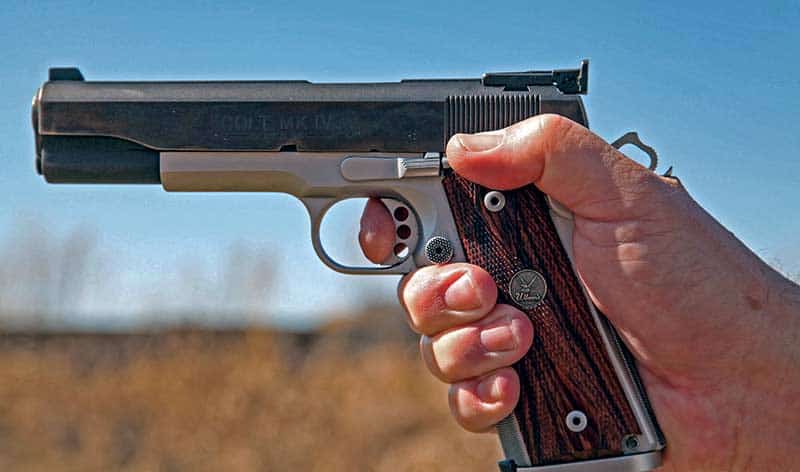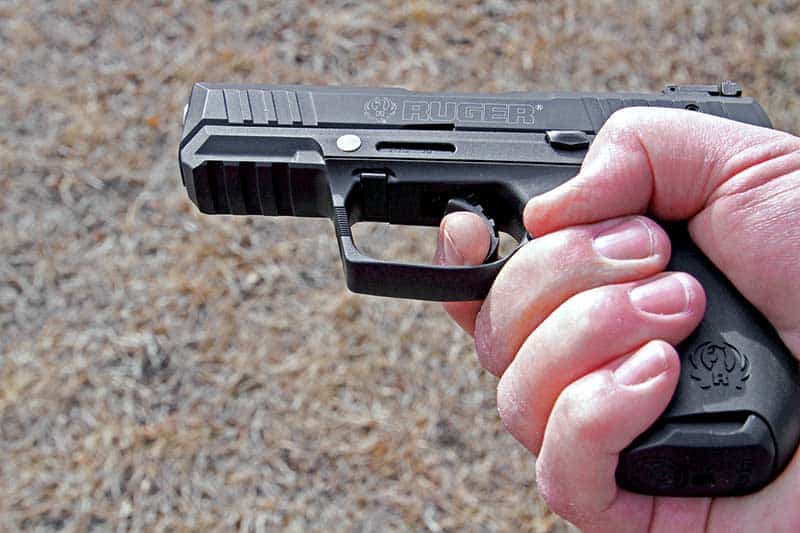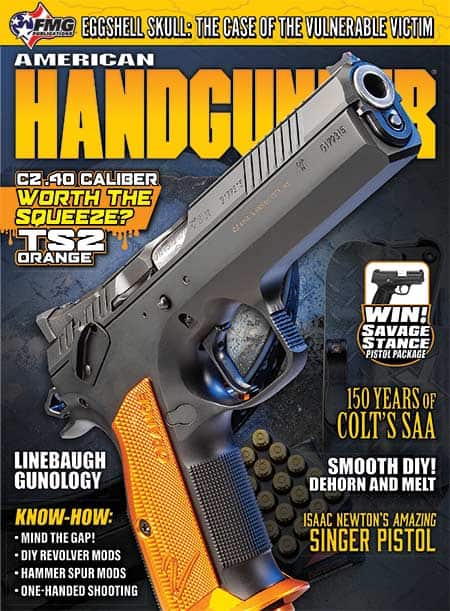One-Handed Shooting: Your Life May Depend On It
There’s really no debate anymore: Two hands on the gun is the best way to shoot a handgun. With two hands, the gun can be held more steadily. Recoil management and recovery are superior. I remember long ago, a two-hand hold was virtually unheard of.
Today the pendulum has swung so far that it’s unusual not to see a two-hand hold. Don’t get me wrong, I am as big a proponent of a two-hand hold as anyone, but I believe a competent handgunner should be able to shoot well one-handed and with either hand.
Why?
The practical reasons are obvious. It may be only one hand is available. The other hand may be needed to hold a steering wheel, ladder, door, phone, or safety rail. Or the hand may be in use to pull a bystander to safety, fend off an attacker, control a prisoner, or toss a grenade back at the thrower. Okay, the last is a stretch.
The other possibility is one arm may be disabled, for example, by a gunshot, knife attack, a bad fall, or a vehicle accident. In reading and hearing accounts of gun battles, it is surprising how often one or both arms are hit. I suppose because the arms and hands are in front of the chest area, plus the natural tendency to focus on what is most dangerous to you. It happens often enough that one would be foolish not to have the ability to stay in the fight even if one arm is rendered useless.
Challenges
I’m an old-timer who started out shooting one-handed. From what I see today, most beginning handgunners start out with a two-hand hold and only learn one-hand shooting later, if at all. Compared to shooting with two hands, they find one-hand shooting has several challenges.
Accuracy is reduced, or perhaps a better way to say it is accurate shooting is more difficult because it’s harder to hold the gun steadily. The splendid scores posted by bullseye shooters prove it can be done, but it does take more effort. Recoil management is more difficult and breaks between shots during fast strings of fire are generally longer.
The point of impact can change even with a good sight picture. Those who can shoot with reasonable accuracy using two hands often notice such a change. A right-hand shooter will often find their shots grouping to the left. How big a difference? It varies, but at 10 yards, I’ve seen shifts from only a couple to 6″ to 8″.
There are two reasons for this shift. One is the recoil action of the gun. When held in one hand, the gun tends to recoil away from the mass of the hand and toward the open side. The heavier the recoil, of course, the more this becomes apparent. The other reason is trigger pressure. Ideally, the trigger is pressed straight back along the axis of the barrel. It is very common to put some sideways pressure on the trigger during the press, typically to the left for a right-handed shooter. A solid two-hand hold can compensate for sideways pressure, but it becomes more evident when shooting with one hand.
What You Can Do
There are several things a shooter can do. One is to increase hand and arm strength. When I was doing a lot of competitive shooting, I used to keep one of those grip squeezer things in my vehicle and use it on long drives. A rubber ball works as well if you can keep the dog from running off with it.
In training, focus on pressing the trigger straight back without adding sideways pressure. As a nice bonus, such skill will enhance your accuracy when shooting two-handed as well.
Another fix is to compensate for impact shift while aiming — for a right-hand shot, holding more to the right than you would shooting two-handed. I see this as a stopgap measure; impact shift should decrease as arm strength and technical skill improve. Personally, I am not very ambidextrous. I can barely wave hello or activate a turn indicator with my left hand. By dint of hard practice, I got to be reasonably competent shooting left-handed, but I confess to still holding a bit to the left.
The primary fix (you knew this was coming) is regular, focused, attentive practice. It may be boring, and the results may never be spectacular, but competent shooting with either hand can win you matches. It might even save your life.







